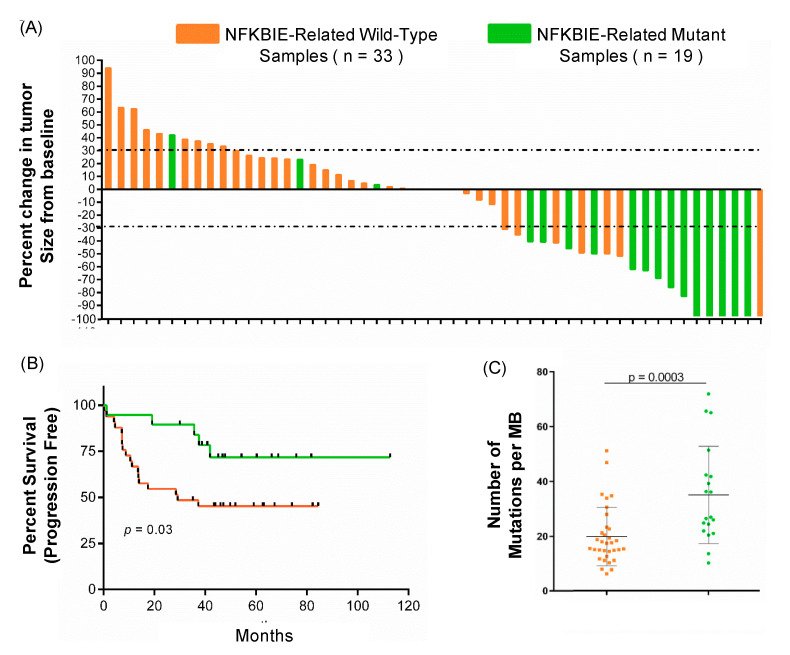Figure 2.
The clinical and genomic comparison of NFKBIE-related wild-type (n = 33) vs. mutant patients (n = 19). Patients with an NFKBIE-related gene mutation (either PPP6R2, PPP6C, NFKB1, PPP6R1, RELA, and NFKB2) are identified in green, and patients wild-type for these genes are identified in orange. (A) Waterfall plot depicting the percent change in tumor size by RECIST criteria. Fourteen patients with a mutation in a NFKBIE-related gene had tumor regression ≥ 30%, marked by grey dashed lines. (B) Progression free survival (PFS, p = 0.03) time in months for patients with and without a NFKBIE-related gene mutation. (Kaplan–Meier curves. p-values calculated using chi-squared, Mantel–Cox test). Patients harboring a tumor with a mutation in a NFKBIE-related gene had longer PFS times than patients who did not. (C) The difference in tumor mutational burden between tumors with a variant in a NFKBIE-related gene compared to those that are wildtype. Tumor mutational burden (TMB) is the measurement of the number of variants within the tumor as calculated by number of mutations per megabase as sequenced by whole exome, see methods (p = 0.003). The error bars represent standard deviation. p-values were calculated using an un-paired t-test.

